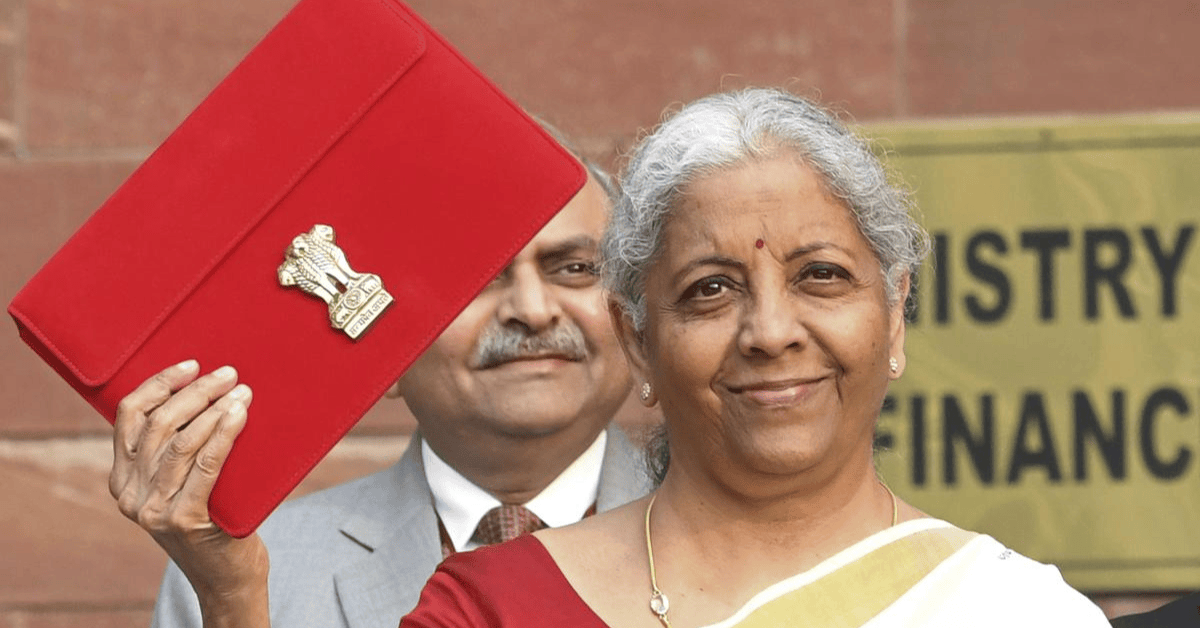Budget 2025 & the Middle Class: What’s At Stake?
Picture this: a family in Mumbai debates skipping their annual vacation to save for rising school fees. A Delhi couple wonders if they’ll ever afford a home. A Hyderabad freelancer stresses over soaring healthcare costs. This is the middle-class reality as Budget 2025 looms—a policy puzzle that could make or break millions. Let’s decode what’s coming.
Why Everyone’s Talking About Budget 2025
It’s that time of the year again—when salaried folks refresh Twitter obsessively and the term “Budget 2025” starts trending faster than a celebrity breakup. And in the eye of the storm? The ever-shrinking, ever-hopeful Middle Class. Whether you tuned into the Parliament broadcast or watched the now-viral YouTube video breaking it all down in layman terms, one thing’s clear: Budget 2025 has stirred the pot. And not in a good way.
“Middle Class” in 2025: Who Exactly Are We Talking About?
The term “middle class” is slippery. In India, it’s anyone earning ₹5–30 lakh annually. But Budget 2025 targets a narrower slice—the “aspirational” middle class (₹10–20 lakh). These are families juggling EMIs, school fees, and aging parents. They’re not poor enough for subsidies, not rich enough for tax havens.
Key Stat: 60% of India’s middle class spends over 50% of income on basics—food, rent, education.
What’s Really Happening to the Middle Class?
They’re squeezed. Like toothpaste in a nearly empty tube. With stagnating salaries, sky-high rent, and grocery bills doing Olympic-level pole vaulting, India’s Middle Class is feeling it. And now—Budget 2025 shows no mercy. There’s disappointment. There’s frustration. There’s rage… and memes. So many memes.
Definition Check: Who Exactly Falls Into the ‘Middle Class’ Bucket?
Here’s the kicker: there’s no official definition. But according to economists, the “Middle Class” generally refers to households earning between ₹5 lakh and ₹30 lakh per year. Sounds okay, right? Till you factor in EMI, school fees, medical expenses, and your cousin’s destination wedding.
Flashback: How Has the Middle Class Evolved Since 2000?
Back in the early 2000s, having a Maruti, a landline, and a stable job meant you were comfortably middle class. Fast forward to 2025—owning a car is a liability, landlines are extinct, and stable jobs are as mythical as unicorns. Expenses have grown, but income? Not so much.

Key Highlights from Budget 2025 (That Hit the Middle Class Hard)
Let’s break this down like your friend who explains taxes over chai:
Income Tax Slabs: Any Relief?
Nope. The slabs remain unchanged. Again. Cue collective sighs from millions. While inflation rises, tax limits stay frozen in time.
Savings Deductions: Gone or Gained?
The much-loved 80C deduction cap (₹1.5 lakh) remains untouched. And that’s the problem—it hasn’t increased in a decade.
Inflation Adjustments: Real or Rhetorical?
While the government claims inflation is “under control,” the grocery bills say otherwise. Rice, milk, and tomatoes have had more glow-ups than Bollywood stars.
The Viral Video Breakdown: What Did the YouTube Video Reveal?
The now-famous YouTube video (yes, that one) titled “Middle Class Crushed Again: Budget 2025 Reaction” broke it down in painfully simple terms. With graphs, sarcasm, and stats, the creator explained:
How the tax burden unfairly affects the salaried class
Why there’s no incentive to save anymore
And how corporate benefits seem disproportionately higher
The video hit 1M+ views in 48 hours. Clearly, it struck a chord.
Quote of the Moment: “Middle Class Feels Like the Stepchild of the Nation”
One quote that keeps popping up? This gem:
“The rich get subsidies, the poor get freebies, and the middle class gets ignored.”
Painfully accurate.
Cost of Living 2025: How Much Worse Is It Getting?
According to the RBI’s latest data:
Rent in urban cities has jumped 18% YoY
School fees up by 11%
Fuel prices hover at record highs
Meanwhile, salaries have barely seen a 5% bump. Math’s not mathing.
Middle Class vs Rich Class: The Growing Gap
In 2025, the disparity is starker than ever. While the upper 10% enjoy tax loopholes and capital gains exemptions, the Middle Class gets taxed on their every rupee. The rich are buying EVs and second homes; the middle class is downgrading from full-cream to toned milk.
Statistics That’ll Make You Go “Wait, What?”
60% of India’s income tax is paid by the Middle Class
77% of wealth is owned by the top 10%
45% of Indian middle-class households report “financial insecurity” in surveys
Numbers don’t lie—but they sure do sting.
The ‘Invisible Backbone’: How Much Tax Does the Middle Class Pay?
They’re the unsung heroes—contributing massively to national revenue. No black money. No evasion. Just clean, honest tax paid via TDS every month. Yet, they receive minimal direct benefits or support.

Public Reaction: What Are People Saying on Social Media?
From #MiddleClassIgnored trending on X (formerly Twitter) to budget-themed memes flooding Instagram, the public outrage is loud and creative. One popular meme read:
“Middle Class during Budget season: Expectations – Sky high. Reality – Ground floor.”
Expert Opinions: Economists Weigh In
Economists like Raghuram Rajan and Montek Singh Ahluwalia suggest that ignoring the middle-income group is “unsustainable.” Rajan warns:
“A thriving middle class is essential for long-term consumption growth. Ignoring them in fiscal policy is a short-sighted move.”
Timeline of Government Promises vs Reality (2019–2025)
2019: “Middle class will be empowered”—promise made.
2020: Pandemic relief? Mostly for the poor & corporates.
2021–2024: No major tax reforms.
2025: Budget once again skips major middle-class announcements.
It’s starting to feel like Groundhog Day.
Future Implications: What Might Happen Next Year?
Economists predict:
Reduced consumer spending
A savings crunch
Lowered trust in governance
If this trend continues, we might see a sluggish economy led by a discouraged working population.
Middle Class in Smaller Cities vs Metro Life: A Tale of Two Wallets
Metro middle class spends 40% of income on rent. In Tier-2 towns, it’s about 20%. But both groups are equally burdened by education, healthcare, and lifestyle inflation. One’s choking on EMIs, the other on fuel costs.
The Great Indian Budget Disconnect
Every year, hopes rise. Every year, disappointment follows. It’s a cycle. A loop. A glitch in the matrix. Despite being the “aspirational engine,” the middle class remains unheard, unseen, unfavored.
Can the Middle Class Save More or Spend More in 2025?
Spoiler alert: Neither. With disposable income shrinking and expenses ballooning, saving feels like a luxury. And spending? That’s a guilty pleasure.
Final Thoughts: Is It Time to Redefine Middle Class?
Yes. Because today’s “middle class” lives paycheck to paycheck. They carry the burden of aspiration with zero policy cushioning. Maybe, just maybe, it’s time the Budget stopped treating them as an afterthought.
FAQs
1. What defines the Middle Class in India?
Usually, households earning between ₹5–30 lakh annually.
2. Did Budget 2025 offer any tax relief for the Middle Class?
No major relief was provided—tax slabs remain unchanged.
3. What are the biggest concerns of the Middle Class post-Budget 2025?
Rising costs, stagnant incomes, and lack of incentives for savings.
4. How much tax does the Indian Middle Class contribute?
They contribute approximately 60% of total income tax revenue.
5. What did the viral YouTube video say about Budget 2025?
It criticized the government’s neglect of the Middle Class and highlighted economic disparities.
6. Is the cost of living higher in metros or smaller cities?
Metros are costlier, especially for rent—but both are heavily impacted by inflation.
7. Why is the Middle Class called the ‘Invisible Backbone’?
Because they contribute heavily but receive few direct benefits.
8. Will there be any mid-year relief measures announced?
Unlikely—most budgetary changes are annual.
9. How do experts view the current state of the Middle Class?
They see neglect of this group as a long-term economic risk.
10. What can the Middle Class do to cope?
Better financial planning, investment diversification, and increased policy engagement.
11. Are there any new savings schemes introduced in Budget 2025?
Not specifically for the Middle Class.
12. Which sectors are most impacted for Middle Class families?
Education, fuel, healthcare, and housing.
13. What role does the Middle Class play in the economy?
A huge one—from consumption to tax contribution.
14. Has the government acknowledged Middle Class grievances?
Only in speeches—not so much in policy.
15. What’s the outlook for 2026?
Unless addressed, dissatisfaction may influence election sentiment and economic behavior.
Final Take: Survival Tips for the Middle Class
Budget 2025 isn’t a magic wand—it’s a weather forecast. Prepare for storms. Diversify income. Invest in skills, not just property. And if you’re overwhelmed? Visit here for jargon-free financial guides. Because surviving the middle-class squeeze needs more than hope—it needs a plan.
Please don’t forget to leave a review.
Explore more by joining me on Gemscor.














